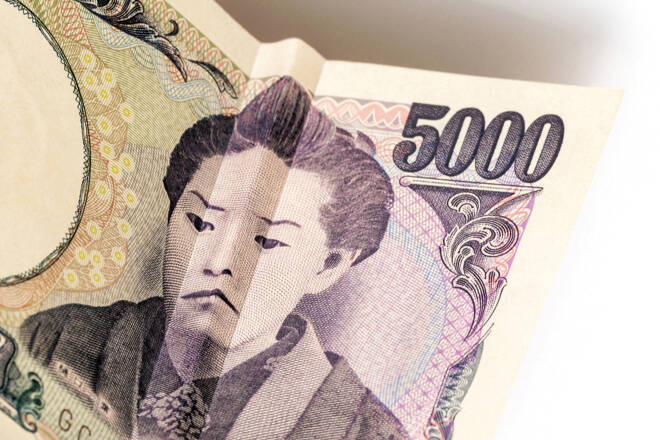Advertisement
Advertisement
Japanese Yen and Australian Dollar News: Will Yen Break 150 on Inflation Trends?
By:
Key Points:
- Tokyo inflation surpasses 2%, fueling BoJ December rate hike speculation despite mixed labor market data.
- AUD/USD steadies as RBA eyes inflation trends. Private sector credit growth could shift rate hike timelines significantly.
- Fed commentary on Personal Income data could drive USD/JPY volatility, testing key resistance at 153.5 or dropping below 150.
Tokyo Inflation and Retail Sales Greenlight a December BoJ Rate Hike
On Friday, November 29, Tokyo inflation and Japan’s retail sales impacted the USD/JPY pair.
How will the inflation and retail sales report influence the BoJ rate path?
Tokyo’s core inflation rate rose from 1.8% in October to 2.2 in November. Significantly, the inflation rate surpassed the BoJ’s 2% target, bolstering the case for a December rate hike.
Retail sales could also raise investor expectations for a December BoJ rate hike, climbing 1.6% year-on-year in October, up from 0.7% in September. Strong retail sales trends may fuel demand-driven inflation. Additionally, upward trends in consumer spending could bolster the Japanese economy as private consumption contributes between 55-60% to GDP.
However, labor market data created a degree of policy uncertainty. Japan’s unemployment rate edged up from 2.4% in September to 2.5% in October. Looser labor market conditions may soften wage growth, potentially dampening household spending and inflationary pressures.
Despite the labor market data, Tokyo inflation trends offered the BoJ insights into potential November national inflation data.
Economists Divided on the BoJ Lifting Interest Rates to 0.50
A November Reuters poll revealed that 56% of economists expect a December hike, rising from 49% in October. Reuters conducted the poll before October’s national inflation report and November’s Services PMI.
Japan’s annual inflation rate ex-food and energy ticked up from 2.1% in September to 2.3% in October. Additionally, Japan’s Jibun Bank Services PMI climbed from 49.7 in October to 50.2 in November, signaling a rebound in the services sector, crucial for the BoJ’s policy decisions.
Japanese Yen Daily Chart
Shifting the focus to the US session, FOMC member reactions to the Personal Income and Outlays Report could influence USD/JPY trends. Calls to delay a Fed rate cut on elevated inflation could drive the USD/JPY pair toward 153.5, a crucial resistance level. Conversely, dovish forward guidance may pull the pair below the pivotal 150 mark.
AUD/USD: Spotlight on Private Sector Credit
Turning to the AUD/USD, private sector credit figures will influence Aussie dollar demand. Economists expect private sector credit to rise 0.4% month-on-month in October after an increase of 0.5% in September.
Stronger consumer credit growth could signal a pickup in consumer spending, fueling demand-driven inflation. Higher inflation indications may delay the timing of an RBA interest rate hike, pushing the AUD/USD pair toward $0.65500. On the other hand, weaker credit demand may ease inflationary concerns, potentially dragging the pair toward $0.64500.
Leading inflation indicators are significant considerations for the RBA. On Thursday, RBA Governor Michele Bullock reiterated the Bank’s focus on underlying inflation, excess demand, and labor market trends.
Governor Bullock emphasized that the RBA did not hike rates as much as other central banks and, as a result, underlying inflation remains too high to consider near-term interest rate cuts.
Australia’s annual trimmed mean inflation rate accelerated to 3.5% in October, up from 3.2% in September, supporting Governor Bullock’s insights.
Australian Dollar Daily Chart
In the US session, investors should track FOMC member commentary. Support for a December Fed rate cut could boost AUD/USD toward $0.65500, while delays until Q1 2025 might push it below $0.64500.
Conversely, calls for a delay to rate cuts until Q1 2025 may pull the pair below $0.64500.
October’s Personal Income and Outlays Report created uncertainty about a Fed rate cut, giving FOMC member insights more weight. The Core PCE Price Index increased from 2.7% year-on-year in September to 2.8% in October.
Monitoring Global Monetary Policy Speculation
In light of evolving rate expectations, traders should closely monitor monetary policy developments to navigate USD/JPY and AUD/USD volatility.
Stay ahead of the markets! Explore our detailed analysis of monetary policy developments and key economic indicators to refine your trading strategies. Discover more here.
About the Author
Bob Masonauthor
With over 28 years of experience in the financial industry, Bob has worked with various global rating agencies and multinational banks. Currently he is covering currencies, commodities, alternative asset classes and global equities, focusing mostly on European and Asian markets.
Did you find this article useful?
Latest news and analysis
Advertisement
